Photo
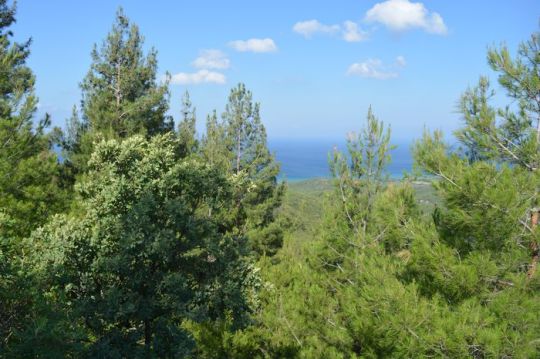
Extensive Archaeological Endeavors
Early Excavations and Discoveries
In 1960, exploration of Turnovo’s historical sites commenced, focusing on the south transverse fortress wall and the Patriarchal complex. Subsequent years saw significant revelations, with 1963 marking the discovery of a small church in the square in front of the Palace and the excavation of a residential district on the west slope of the hill “Momina Krepost.”
Expansion of Excavations
The scope of archaeological endeavors expanded notably after 1966, following a government decree aimed at developing Turnovo as a historical, cultural, and tourist destination. Spearheaded by a Public Committee and involving a collaboration between archaeologists, the Bulgarian Academy of Sciences, and the Archaeological Museum in Turnovo, the project gained momentum.
Focus Areas and Findings
The archaeological focus centered on key sites such as the central capital fortress, the monastery “Velikata Lavra,” and the church “Sveti Dimitur.” Detailed examinations were conducted on Tsarevets Hill, unraveling the architectural complexities of the north and west fortress walls Private Tours Istanbul, along with associated defenses, gates, towers, and dwellings. Particularly significant was the exploration of the Castle of Bulgarian Tzars and the Patriarchate, shedding light on both secular and clerical powers during The Second Bulgarian Kingdom.
Rich Discoveries
The extensive excavations yielded remarkable findings, including over 500 dwellings, 23 Middle Age churches, and a plethora of artifacts. These discoveries provided valuable insights not only into architectural styles but also into the craft industry, lifestyle, and cultural practices of the society during that era.
Unveiling Historical Layers
A crucial aspect of the excavation involved deciphering the stratification of Turnovo’s history, spanning from the Thracian settlement through the early Byzantium town and the early Middle Age settlement, up to the emergence of the capital Turnovo town. Additionally, the fate of the monuments under the rule of the Ottoman Empire was meticulously examined, enriching our understanding of Turnovo’s complex historical narrative.
0 notes
Photo
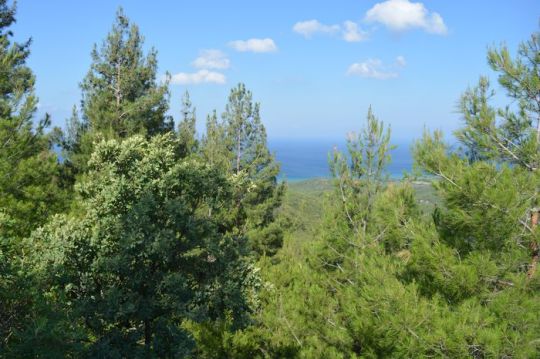
Extensive Archaeological Endeavors
Early Excavations and Discoveries
In 1960, exploration of Turnovo’s historical sites commenced, focusing on the south transverse fortress wall and the Patriarchal complex. Subsequent years saw significant revelations, with 1963 marking the discovery of a small church in the square in front of the Palace and the excavation of a residential district on the west slope of the hill “Momina Krepost.”
Expansion of Excavations
The scope of archaeological endeavors expanded notably after 1966, following a government decree aimed at developing Turnovo as a historical, cultural, and tourist destination. Spearheaded by a Public Committee and involving a collaboration between archaeologists, the Bulgarian Academy of Sciences, and the Archaeological Museum in Turnovo, the project gained momentum.
Focus Areas and Findings
The archaeological focus centered on key sites such as the central capital fortress, the monastery “Velikata Lavra,” and the church “Sveti Dimitur.” Detailed examinations were conducted on Tsarevets Hill, unraveling the architectural complexities of the north and west fortress walls Private Tours Istanbul, along with associated defenses, gates, towers, and dwellings. Particularly significant was the exploration of the Castle of Bulgarian Tzars and the Patriarchate, shedding light on both secular and clerical powers during The Second Bulgarian Kingdom.
Rich Discoveries
The extensive excavations yielded remarkable findings, including over 500 dwellings, 23 Middle Age churches, and a plethora of artifacts. These discoveries provided valuable insights not only into architectural styles but also into the craft industry, lifestyle, and cultural practices of the society during that era.
Unveiling Historical Layers
A crucial aspect of the excavation involved deciphering the stratification of Turnovo’s history, spanning from the Thracian settlement through the early Byzantium town and the early Middle Age settlement, up to the emergence of the capital Turnovo town. Additionally, the fate of the monuments under the rule of the Ottoman Empire was meticulously examined, enriching our understanding of Turnovo’s complex historical narrative.
0 notes
Photo

Extensive Archaeological Endeavors
Early Excavations and Discoveries
In 1960, exploration of Turnovo’s historical sites commenced, focusing on the south transverse fortress wall and the Patriarchal complex. Subsequent years saw significant revelations, with 1963 marking the discovery of a small church in the square in front of the Palace and the excavation of a residential district on the west slope of the hill “Momina Krepost.”
Expansion of Excavations
The scope of archaeological endeavors expanded notably after 1966, following a government decree aimed at developing Turnovo as a historical, cultural, and tourist destination. Spearheaded by a Public Committee and involving a collaboration between archaeologists, the Bulgarian Academy of Sciences, and the Archaeological Museum in Turnovo, the project gained momentum.
Focus Areas and Findings
The archaeological focus centered on key sites such as the central capital fortress, the monastery “Velikata Lavra,” and the church “Sveti Dimitur.” Detailed examinations were conducted on Tsarevets Hill, unraveling the architectural complexities of the north and west fortress walls Private Tours Istanbul, along with associated defenses, gates, towers, and dwellings. Particularly significant was the exploration of the Castle of Bulgarian Tzars and the Patriarchate, shedding light on both secular and clerical powers during The Second Bulgarian Kingdom.
Rich Discoveries
The extensive excavations yielded remarkable findings, including over 500 dwellings, 23 Middle Age churches, and a plethora of artifacts. These discoveries provided valuable insights not only into architectural styles but also into the craft industry, lifestyle, and cultural practices of the society during that era.
Unveiling Historical Layers
A crucial aspect of the excavation involved deciphering the stratification of Turnovo’s history, spanning from the Thracian settlement through the early Byzantium town and the early Middle Age settlement, up to the emergence of the capital Turnovo town. Additionally, the fate of the monuments under the rule of the Ottoman Empire was meticulously examined, enriching our understanding of Turnovo’s complex historical narrative.
0 notes
Photo

Extensive Archaeological Endeavors
Early Excavations and Discoveries
In 1960, exploration of Turnovo’s historical sites commenced, focusing on the south transverse fortress wall and the Patriarchal complex. Subsequent years saw significant revelations, with 1963 marking the discovery of a small church in the square in front of the Palace and the excavation of a residential district on the west slope of the hill “Momina Krepost.”
Expansion of Excavations
The scope of archaeological endeavors expanded notably after 1966, following a government decree aimed at developing Turnovo as a historical, cultural, and tourist destination. Spearheaded by a Public Committee and involving a collaboration between archaeologists, the Bulgarian Academy of Sciences, and the Archaeological Museum in Turnovo, the project gained momentum.
Focus Areas and Findings
The archaeological focus centered on key sites such as the central capital fortress, the monastery “Velikata Lavra,” and the church “Sveti Dimitur.” Detailed examinations were conducted on Tsarevets Hill, unraveling the architectural complexities of the north and west fortress walls Private Tours Istanbul, along with associated defenses, gates, towers, and dwellings. Particularly significant was the exploration of the Castle of Bulgarian Tzars and the Patriarchate, shedding light on both secular and clerical powers during The Second Bulgarian Kingdom.
Rich Discoveries
The extensive excavations yielded remarkable findings, including over 500 dwellings, 23 Middle Age churches, and a plethora of artifacts. These discoveries provided valuable insights not only into architectural styles but also into the craft industry, lifestyle, and cultural practices of the society during that era.
Unveiling Historical Layers
A crucial aspect of the excavation involved deciphering the stratification of Turnovo’s history, spanning from the Thracian settlement through the early Byzantium town and the early Middle Age settlement, up to the emergence of the capital Turnovo town. Additionally, the fate of the monuments under the rule of the Ottoman Empire was meticulously examined, enriching our understanding of Turnovo’s complex historical narrative.
0 notes
Photo

Extensive Archaeological Endeavors
Early Excavations and Discoveries
In 1960, exploration of Turnovo’s historical sites commenced, focusing on the south transverse fortress wall and the Patriarchal complex. Subsequent years saw significant revelations, with 1963 marking the discovery of a small church in the square in front of the Palace and the excavation of a residential district on the west slope of the hill “Momina Krepost.”
Expansion of Excavations
The scope of archaeological endeavors expanded notably after 1966, following a government decree aimed at developing Turnovo as a historical, cultural, and tourist destination. Spearheaded by a Public Committee and involving a collaboration between archaeologists, the Bulgarian Academy of Sciences, and the Archaeological Museum in Turnovo, the project gained momentum.
Focus Areas and Findings
The archaeological focus centered on key sites such as the central capital fortress, the monastery “Velikata Lavra,” and the church “Sveti Dimitur.” Detailed examinations were conducted on Tsarevets Hill, unraveling the architectural complexities of the north and west fortress walls Private Tours Istanbul, along with associated defenses, gates, towers, and dwellings. Particularly significant was the exploration of the Castle of Bulgarian Tzars and the Patriarchate, shedding light on both secular and clerical powers during The Second Bulgarian Kingdom.
Rich Discoveries
The extensive excavations yielded remarkable findings, including over 500 dwellings, 23 Middle Age churches, and a plethora of artifacts. These discoveries provided valuable insights not only into architectural styles but also into the craft industry, lifestyle, and cultural practices of the society during that era.
Unveiling Historical Layers
A crucial aspect of the excavation involved deciphering the stratification of Turnovo’s history, spanning from the Thracian settlement through the early Byzantium town and the early Middle Age settlement, up to the emergence of the capital Turnovo town. Additionally, the fate of the monuments under the rule of the Ottoman Empire was meticulously examined, enriching our understanding of Turnovo’s complex historical narrative.
0 notes
Photo
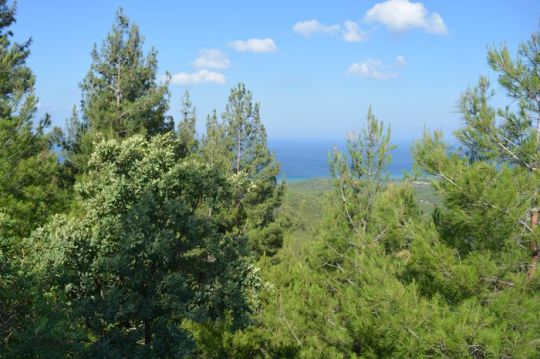
Extensive Archaeological Endeavors
Early Excavations and Discoveries
In 1960, exploration of Turnovo’s historical sites commenced, focusing on the south transverse fortress wall and the Patriarchal complex. Subsequent years saw significant revelations, with 1963 marking the discovery of a small church in the square in front of the Palace and the excavation of a residential district on the west slope of the hill “Momina Krepost.”
Expansion of Excavations
The scope of archaeological endeavors expanded notably after 1966, following a government decree aimed at developing Turnovo as a historical, cultural, and tourist destination. Spearheaded by a Public Committee and involving a collaboration between archaeologists, the Bulgarian Academy of Sciences, and the Archaeological Museum in Turnovo, the project gained momentum.
Focus Areas and Findings
The archaeological focus centered on key sites such as the central capital fortress, the monastery “Velikata Lavra,” and the church “Sveti Dimitur.” Detailed examinations were conducted on Tsarevets Hill, unraveling the architectural complexities of the north and west fortress walls Private Tours Istanbul, along with associated defenses, gates, towers, and dwellings. Particularly significant was the exploration of the Castle of Bulgarian Tzars and the Patriarchate, shedding light on both secular and clerical powers during The Second Bulgarian Kingdom.
Rich Discoveries
The extensive excavations yielded remarkable findings, including over 500 dwellings, 23 Middle Age churches, and a plethora of artifacts. These discoveries provided valuable insights not only into architectural styles but also into the craft industry, lifestyle, and cultural practices of the society during that era.
Unveiling Historical Layers
A crucial aspect of the excavation involved deciphering the stratification of Turnovo’s history, spanning from the Thracian settlement through the early Byzantium town and the early Middle Age settlement, up to the emergence of the capital Turnovo town. Additionally, the fate of the monuments under the rule of the Ottoman Empire was meticulously examined, enriching our understanding of Turnovo’s complex historical narrative.
0 notes
Photo
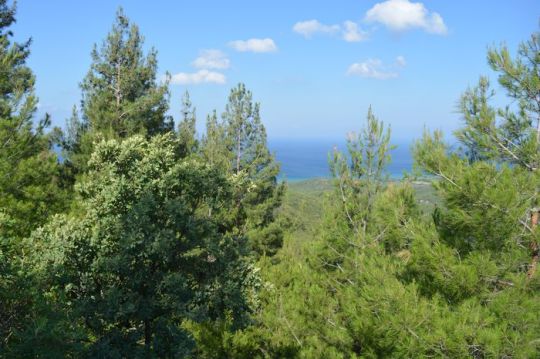
Extensive Archaeological Endeavors
Early Excavations and Discoveries
In 1960, exploration of Turnovo’s historical sites commenced, focusing on the south transverse fortress wall and the Patriarchal complex. Subsequent years saw significant revelations, with 1963 marking the discovery of a small church in the square in front of the Palace and the excavation of a residential district on the west slope of the hill “Momina Krepost.”
Expansion of Excavations
The scope of archaeological endeavors expanded notably after 1966, following a government decree aimed at developing Turnovo as a historical, cultural, and tourist destination. Spearheaded by a Public Committee and involving a collaboration between archaeologists, the Bulgarian Academy of Sciences, and the Archaeological Museum in Turnovo, the project gained momentum.
Focus Areas and Findings
The archaeological focus centered on key sites such as the central capital fortress, the monastery “Velikata Lavra,” and the church “Sveti Dimitur.” Detailed examinations were conducted on Tsarevets Hill, unraveling the architectural complexities of the north and west fortress walls Private Tours Istanbul, along with associated defenses, gates, towers, and dwellings. Particularly significant was the exploration of the Castle of Bulgarian Tzars and the Patriarchate, shedding light on both secular and clerical powers during The Second Bulgarian Kingdom.
Rich Discoveries
The extensive excavations yielded remarkable findings, including over 500 dwellings, 23 Middle Age churches, and a plethora of artifacts. These discoveries provided valuable insights not only into architectural styles but also into the craft industry, lifestyle, and cultural practices of the society during that era.
Unveiling Historical Layers
A crucial aspect of the excavation involved deciphering the stratification of Turnovo’s history, spanning from the Thracian settlement through the early Byzantium town and the early Middle Age settlement, up to the emergence of the capital Turnovo town. Additionally, the fate of the monuments under the rule of the Ottoman Empire was meticulously examined, enriching our understanding of Turnovo’s complex historical narrative.
0 notes
Photo
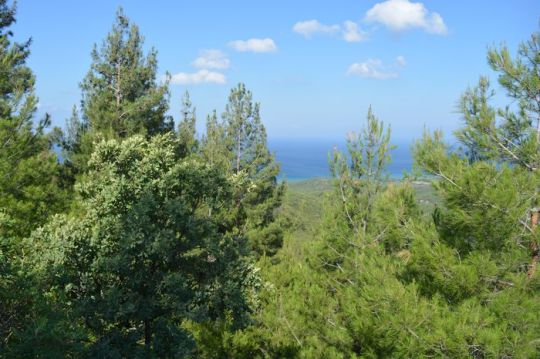
Extensive Archaeological Endeavors
Early Excavations and Discoveries
In 1960, exploration of Turnovo’s historical sites commenced, focusing on the south transverse fortress wall and the Patriarchal complex. Subsequent years saw significant revelations, with 1963 marking the discovery of a small church in the square in front of the Palace and the excavation of a residential district on the west slope of the hill “Momina Krepost.”
Expansion of Excavations
The scope of archaeological endeavors expanded notably after 1966, following a government decree aimed at developing Turnovo as a historical, cultural, and tourist destination. Spearheaded by a Public Committee and involving a collaboration between archaeologists, the Bulgarian Academy of Sciences, and the Archaeological Museum in Turnovo, the project gained momentum.
Focus Areas and Findings
The archaeological focus centered on key sites such as the central capital fortress, the monastery “Velikata Lavra,” and the church “Sveti Dimitur.” Detailed examinations were conducted on Tsarevets Hill, unraveling the architectural complexities of the north and west fortress walls Private Tours Istanbul, along with associated defenses, gates, towers, and dwellings. Particularly significant was the exploration of the Castle of Bulgarian Tzars and the Patriarchate, shedding light on both secular and clerical powers during The Second Bulgarian Kingdom.
Rich Discoveries
The extensive excavations yielded remarkable findings, including over 500 dwellings, 23 Middle Age churches, and a plethora of artifacts. These discoveries provided valuable insights not only into architectural styles but also into the craft industry, lifestyle, and cultural practices of the society during that era.
Unveiling Historical Layers
A crucial aspect of the excavation involved deciphering the stratification of Turnovo’s history, spanning from the Thracian settlement through the early Byzantium town and the early Middle Age settlement, up to the emergence of the capital Turnovo town. Additionally, the fate of the monuments under the rule of the Ottoman Empire was meticulously examined, enriching our understanding of Turnovo’s complex historical narrative.
0 notes
Photo

Extensive Archaeological Endeavors
Early Excavations and Discoveries
In 1960, exploration of Turnovo’s historical sites commenced, focusing on the south transverse fortress wall and the Patriarchal complex. Subsequent years saw significant revelations, with 1963 marking the discovery of a small church in the square in front of the Palace and the excavation of a residential district on the west slope of the hill “Momina Krepost.”
Expansion of Excavations
The scope of archaeological endeavors expanded notably after 1966, following a government decree aimed at developing Turnovo as a historical, cultural, and tourist destination. Spearheaded by a Public Committee and involving a collaboration between archaeologists, the Bulgarian Academy of Sciences, and the Archaeological Museum in Turnovo, the project gained momentum.
Focus Areas and Findings
The archaeological focus centered on key sites such as the central capital fortress, the monastery “Velikata Lavra,” and the church “Sveti Dimitur.” Detailed examinations were conducted on Tsarevets Hill, unraveling the architectural complexities of the north and west fortress walls Private Tours Istanbul, along with associated defenses, gates, towers, and dwellings. Particularly significant was the exploration of the Castle of Bulgarian Tzars and the Patriarchate, shedding light on both secular and clerical powers during The Second Bulgarian Kingdom.
Rich Discoveries
The extensive excavations yielded remarkable findings, including over 500 dwellings, 23 Middle Age churches, and a plethora of artifacts. These discoveries provided valuable insights not only into architectural styles but also into the craft industry, lifestyle, and cultural practices of the society during that era.
Unveiling Historical Layers
A crucial aspect of the excavation involved deciphering the stratification of Turnovo’s history, spanning from the Thracian settlement through the early Byzantium town and the early Middle Age settlement, up to the emergence of the capital Turnovo town. Additionally, the fate of the monuments under the rule of the Ottoman Empire was meticulously examined, enriching our understanding of Turnovo’s complex historical narrative.
0 notes
Text
Eterna's Iceberg of Race Replays

I keep seeing people asking about how to watch MotoGP race replays in a financially responsible way, so here's my guide on where to find them!
TIER 1: MotoGP YouTube Channel Playlist MotoGP is probably one of the better racing series in that there are race replays readily accessible on their YouTube channel. They also do have some replays on their Facebook if you have the time to do an archaeological excavation, which I forgot to put on the iceberg (for example the 2014 Qatar GP). Since it's on their official accounts, it's at the top.
TIER 2: Motomundo Many a motoheads' trusted source for replays! Motomundo also has various documentaries, as well as practice, qualifying and testing replays. Motomundo also has a VKVideo account that which you can use if you are so inclined. Unfortunately, it has been reported of late that many of the videos have stopped working, with most of the older races not accessible at all. On the second tier since it is widely recommended and an open secret.
TIER 3: BiliBili (1) (2) This one is kind of unusual! Some endeavoring fans have done a great work of philanthropy by uploading entire seasons of MotoGP replays onto BiliBili, which is basically the Chinese equivalent of YouTube...but more. It can be overwhelming (they have a function where users can write comments which then are displayed on the screen while the video plays, for example) and maybe when I have more time, I could write a guide. Another circumstance of these replays being Chinese reuploads is that the commentary is also in Chinese, and there are some really very ugly watermarks from the broadcast itself that cannot be readily edited out. However, the archive is VERY extensive, although it only comprises of races. On the third tier since BiliBili is very popular in China, but more obscure in the West, and I only found this because I am Chinese and already had knowledge of the platform. The first link leads to a collection in which all the races from 1979-2019 have been uploaded. The second is from the same user, however it is just footage of 2020 testing. Unfortunately it seems that their uploads have paused there, at least for now.
TIER 4: This suspicious ass looking website If you've ventured this far down into the iceberg, I'm assuming that suspicious looking websites that have the potential to give you a virus don't phase you. But nevertheless, as a disclaimer, this website is a little hard to navigate. However, not only does it provide MotoGP coverage (in English), it also covers the feeder series as well and includes them in their race weekend compilations. There are options to view the race in varying resolutions, as well as links to various other uploads on Meta (not THAT Meta) and the like. Unfortunately around 2018 are where the uploads become a bit spotty, with many of the videos being unplayable and the links also leading nowhere. A very warranted tier four rating.
TIER 5: ArchivoGP (1) (2) (3) The reason I placed this one so low is not necessarily because it's better than the rest of the sources (in fact, at time of writing this post a good portion of their videos have been taken offline) but because the story in finding it was actually pretty funny. For context, I was on the hunt for a clip of Marc Marquez giving reigning world champion Pecco Bagnaia the thumbs up at the end of Mugello Q2 (thank you tumblr user suzuki-ecstar for replying to me about this...) and none of the sources I was using (so, any of the above already listed) had that clip. I was gnashing and gnawing my teeth in pain. So where else does one go to find something that is presumably lost? Internet Archive! I really thought this was the end of the road and I would have to clip that moment from a shitty vertical YouTube Short or something. Pain. But then I happen upon a full MotoGP replay. It wasn't of the session I wanted, but when I looked into the user a little further, I saw that they had uploaded various other full race replays. In their bio it was stated that they had a Telegram channel under the same name (ArchivoGP), so I did a Google search and found that they indeed did. Happily, their uploads (which are DAZN broadcasts consisting of pre-GP, practice, qualifying, sprint, feature race, post-GP and also cover the feeder classes) DID have that moment and that is the story of how I finished a fancam with the help of Internet Archive, which once again has saved my life. The three different links above lead to their old site, their new(?) one, and their video archive in question which is hosted on TokyVideo. Unfortunately their archive only dates back to 2020, and as I have stated previously some of them have been taken down.
MISCELLANEOUS: (1) (2) These are some assorted Internet Archive sources which I found while trying to backtrack how I found the previous source. I haven't had the time to actually sort through and vet the videos except for one, the original ArchivoGP user uploads (which is the first link, though I'm not entirely sure because they have since changed the name of the channel).
I hope with this masterpost I have saved you guys a lot of time that you (and me, to be honest) do not have. If you want to know where to watch races LIVE, user kingofthering has a very handy dandy masterpost here which you can go check out.
Psst: in general, if you want to very legally watch something, this is a good resource that I recommend. Cheers! ;)
129 notes
·
View notes
Text
5 Hidden Costs of Construction to Be Aware Of
5 Hidden Costs of Construction to Be Aware Of https://ift.tt/PxGVOXN Construction projects are notorious for their propensity to exceed budgets. While the initial estimate may seem manageable, unforeseen expenses can quickly pile up, leading to financial strain and project delays. It’s crucial for stakeholders to be aware of the hidden costs that often lurk beneath the surface. Here are five such costs to keep in mind when embarking on a construction endeavor: 1. Site Preparation and Remediation Before construction can commence, the site often requires extensive preparation and remediation. This process may involve clearing land, demolishing existing structures, or addressing environmental concerns such as soil contamination. Failure to adequately account for these tasks can result in unexpected expenses and project delays. 2. Change Orders Changes are inevitable in any construction project, but they can come with a hefty price tag. Whether it’s a client-requested modification or unforeseen complications during construction, change orders often lead to additional costs for materials, labor, and administrative overhead. Properly managing change orders and incorporating them into the budget is essential for mitigating their financial impact. 3. Permitting and Regulatory Compliance Navigating the labyrinth of permits and regulatory requirements can be a time-consuming and costly endeavor. From obtaining building permits to complying with zoning regulations and environmental mandates, failure to adhere to legal requirements can result in fines, legal battles, and project stoppages. Budgeting for permit fees, consultant services, and potential compliance-related expenses is essential for avoiding unforeseen financial setbacks. 4. Unforeseen Site Conditions Despite thorough site assessments and surveys, unexpected conditions can arise once construction is underway. These unforeseen challenges can significantly impact project timelines and budgets, from encountering unstable soil or groundwater to uncovering buried utilities or archaeological artifacts. Implementing contingency plans and setting aside funds for addressing unforeseen site conditions is critical for project success. 5. Project Delays Time is money in the construction industry, and delays can quickly escalate costs. Whether it’s inclement weather, labor shortages, material shortages, or logistical challenges, any disruption to the construction schedule can lead to increased expenses for labor, equipment rentals, and overhead. Proactively managing risks and establishing realistic timelines can help mitigate the impact of project delays on the budget. Construction projects are fraught with hidden costs that can jeopardize budgets and timelines if not properly managed. By anticipating potential expenses such as site preparation, change orders, permitting, unforeseen site conditions, and project delays, stakeholders can better prepare for the financial challenges inherent in construction endeavors. Effective budgeting, risk management, and contingency planning are essential for navigating these hidden costs and ensuring the successful completion of construction projects. The post 5 Hidden Costs of Construction to Be Aware Of first appeared on Shafqat Dad| Real Estate & Construction. via Shafqat Dad| Real Estate & Construction https://shafqatdad.uk May 13, 2024 at 12:34PM
0 notes
Photo
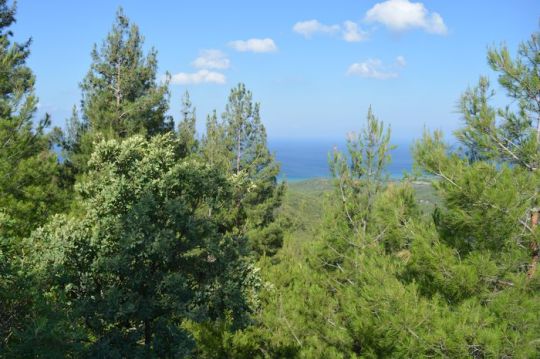
Extensive Archaeological Endeavors
Early Excavations and Discoveries
In 1960, exploration of Turnovo’s historical sites commenced, focusing on the south transverse fortress wall and the Patriarchal complex. Subsequent years saw significant revelations, with 1963 marking the discovery of a small church in the square in front of the Palace and the excavation of a residential district on the west slope of the hill “Momina Krepost.”
Expansion of Excavations
The scope of archaeological endeavors expanded notably after 1966, following a government decree aimed at developing Turnovo as a historical, cultural, and tourist destination. Spearheaded by a Public Committee and involving a collaboration between archaeologists, the Bulgarian Academy of Sciences, and the Archaeological Museum in Turnovo, the project gained momentum.
Focus Areas and Findings
The archaeological focus centered on key sites such as the central capital fortress, the monastery “Velikata Lavra,” and the church “Sveti Dimitur.” Detailed examinations were conducted on Tsarevets Hill, unraveling the architectural complexities of the north and west fortress walls Private Tours Istanbul, along with associated defenses, gates, towers, and dwellings. Particularly significant was the exploration of the Castle of Bulgarian Tzars and the Patriarchate, shedding light on both secular and clerical powers during The Second Bulgarian Kingdom.
Rich Discoveries
The extensive excavations yielded remarkable findings, including over 500 dwellings, 23 Middle Age churches, and a plethora of artifacts. These discoveries provided valuable insights not only into architectural styles but also into the craft industry, lifestyle, and cultural practices of the society during that era.
Unveiling Historical Layers
A crucial aspect of the excavation involved deciphering the stratification of Turnovo’s history, spanning from the Thracian settlement through the early Byzantium town and the early Middle Age settlement, up to the emergence of the capital Turnovo town. Additionally, the fate of the monuments under the rule of the Ottoman Empire was meticulously examined, enriching our understanding of Turnovo’s complex historical narrative.
0 notes
Photo

Extensive Archaeological Endeavors
Early Excavations and Discoveries
In 1960, exploration of Turnovo’s historical sites commenced, focusing on the south transverse fortress wall and the Patriarchal complex. Subsequent years saw significant revelations, with 1963 marking the discovery of a small church in the square in front of the Palace and the excavation of a residential district on the west slope of the hill “Momina Krepost.”
Expansion of Excavations
The scope of archaeological endeavors expanded notably after 1966, following a government decree aimed at developing Turnovo as a historical, cultural, and tourist destination. Spearheaded by a Public Committee and involving a collaboration between archaeologists, the Bulgarian Academy of Sciences, and the Archaeological Museum in Turnovo, the project gained momentum.
Focus Areas and Findings
The archaeological focus centered on key sites such as the central capital fortress, the monastery “Velikata Lavra,” and the church “Sveti Dimitur.” Detailed examinations were conducted on Tsarevets Hill, unraveling the architectural complexities of the north and west fortress walls Private Tours Istanbul, along with associated defenses, gates, towers, and dwellings. Particularly significant was the exploration of the Castle of Bulgarian Tzars and the Patriarchate, shedding light on both secular and clerical powers during The Second Bulgarian Kingdom.
Rich Discoveries
The extensive excavations yielded remarkable findings, including over 500 dwellings, 23 Middle Age churches, and a plethora of artifacts. These discoveries provided valuable insights not only into architectural styles but also into the craft industry, lifestyle, and cultural practices of the society during that era.
Unveiling Historical Layers
A crucial aspect of the excavation involved deciphering the stratification of Turnovo’s history, spanning from the Thracian settlement through the early Byzantium town and the early Middle Age settlement, up to the emergence of the capital Turnovo town. Additionally, the fate of the monuments under the rule of the Ottoman Empire was meticulously examined, enriching our understanding of Turnovo’s complex historical narrative.
0 notes
Photo

Extensive Archaeological Endeavors
Early Excavations and Discoveries
In 1960, exploration of Turnovo’s historical sites commenced, focusing on the south transverse fortress wall and the Patriarchal complex. Subsequent years saw significant revelations, with 1963 marking the discovery of a small church in the square in front of the Palace and the excavation of a residential district on the west slope of the hill “Momina Krepost.”
Expansion of Excavations
The scope of archaeological endeavors expanded notably after 1966, following a government decree aimed at developing Turnovo as a historical, cultural, and tourist destination. Spearheaded by a Public Committee and involving a collaboration between archaeologists, the Bulgarian Academy of Sciences, and the Archaeological Museum in Turnovo, the project gained momentum.
Focus Areas and Findings
The archaeological focus centered on key sites such as the central capital fortress, the monastery “Velikata Lavra,” and the church “Sveti Dimitur.” Detailed examinations were conducted on Tsarevets Hill, unraveling the architectural complexities of the north and west fortress walls Private Tours Istanbul, along with associated defenses, gates, towers, and dwellings. Particularly significant was the exploration of the Castle of Bulgarian Tzars and the Patriarchate, shedding light on both secular and clerical powers during The Second Bulgarian Kingdom.
Rich Discoveries
The extensive excavations yielded remarkable findings, including over 500 dwellings, 23 Middle Age churches, and a plethora of artifacts. These discoveries provided valuable insights not only into architectural styles but also into the craft industry, lifestyle, and cultural practices of the society during that era.
Unveiling Historical Layers
A crucial aspect of the excavation involved deciphering the stratification of Turnovo’s history, spanning from the Thracian settlement through the early Byzantium town and the early Middle Age settlement, up to the emergence of the capital Turnovo town. Additionally, the fate of the monuments under the rule of the Ottoman Empire was meticulously examined, enriching our understanding of Turnovo’s complex historical narrative.
0 notes
Photo

Extensive Archaeological Endeavors
Early Excavations and Discoveries
In 1960, exploration of Turnovo’s historical sites commenced, focusing on the south transverse fortress wall and the Patriarchal complex. Subsequent years saw significant revelations, with 1963 marking the discovery of a small church in the square in front of the Palace and the excavation of a residential district on the west slope of the hill “Momina Krepost.”
Expansion of Excavations
The scope of archaeological endeavors expanded notably after 1966, following a government decree aimed at developing Turnovo as a historical, cultural, and tourist destination. Spearheaded by a Public Committee and involving a collaboration between archaeologists, the Bulgarian Academy of Sciences, and the Archaeological Museum in Turnovo, the project gained momentum.
Focus Areas and Findings
The archaeological focus centered on key sites such as the central capital fortress, the monastery “Velikata Lavra,” and the church “Sveti Dimitur.” Detailed examinations were conducted on Tsarevets Hill, unraveling the architectural complexities of the north and west fortress walls Private Tours Istanbul, along with associated defenses, gates, towers, and dwellings. Particularly significant was the exploration of the Castle of Bulgarian Tzars and the Patriarchate, shedding light on both secular and clerical powers during The Second Bulgarian Kingdom.
Rich Discoveries
The extensive excavations yielded remarkable findings, including over 500 dwellings, 23 Middle Age churches, and a plethora of artifacts. These discoveries provided valuable insights not only into architectural styles but also into the craft industry, lifestyle, and cultural practices of the society during that era.
Unveiling Historical Layers
A crucial aspect of the excavation involved deciphering the stratification of Turnovo’s history, spanning from the Thracian settlement through the early Byzantium town and the early Middle Age settlement, up to the emergence of the capital Turnovo town. Additionally, the fate of the monuments under the rule of the Ottoman Empire was meticulously examined, enriching our understanding of Turnovo’s complex historical narrative.
0 notes
Photo

Extensive Archaeological Endeavors
Early Excavations and Discoveries
In 1960, exploration of Turnovo’s historical sites commenced, focusing on the south transverse fortress wall and the Patriarchal complex. Subsequent years saw significant revelations, with 1963 marking the discovery of a small church in the square in front of the Palace and the excavation of a residential district on the west slope of the hill “Momina Krepost.”
Expansion of Excavations
The scope of archaeological endeavors expanded notably after 1966, following a government decree aimed at developing Turnovo as a historical, cultural, and tourist destination. Spearheaded by a Public Committee and involving a collaboration between archaeologists, the Bulgarian Academy of Sciences, and the Archaeological Museum in Turnovo, the project gained momentum.
Focus Areas and Findings
The archaeological focus centered on key sites such as the central capital fortress, the monastery “Velikata Lavra,” and the church “Sveti Dimitur.” Detailed examinations were conducted on Tsarevets Hill, unraveling the architectural complexities of the north and west fortress walls Private Tours Istanbul, along with associated defenses, gates, towers, and dwellings. Particularly significant was the exploration of the Castle of Bulgarian Tzars and the Patriarchate, shedding light on both secular and clerical powers during The Second Bulgarian Kingdom.
Rich Discoveries
The extensive excavations yielded remarkable findings, including over 500 dwellings, 23 Middle Age churches, and a plethora of artifacts. These discoveries provided valuable insights not only into architectural styles but also into the craft industry, lifestyle, and cultural practices of the society during that era.
Unveiling Historical Layers
A crucial aspect of the excavation involved deciphering the stratification of Turnovo’s history, spanning from the Thracian settlement through the early Byzantium town and the early Middle Age settlement, up to the emergence of the capital Turnovo town. Additionally, the fate of the monuments under the rule of the Ottoman Empire was meticulously examined, enriching our understanding of Turnovo’s complex historical narrative.
0 notes